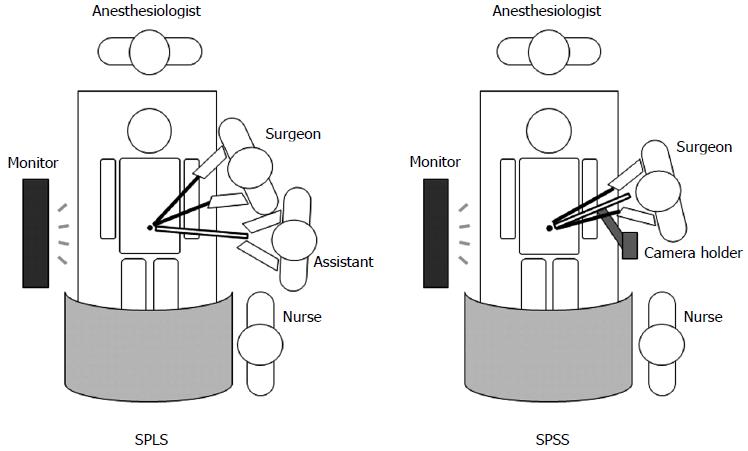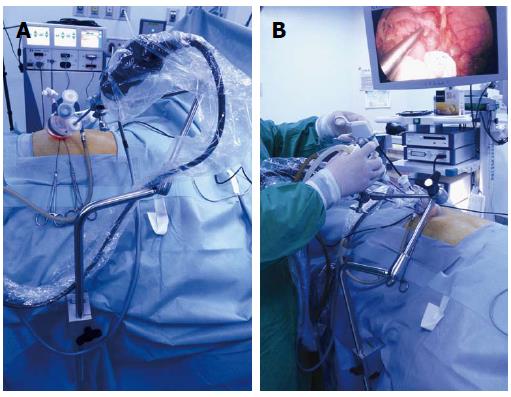Copyright
©The Author(s) 2015.
World J Gastroenterol. Apr 21, 2015; 21(15): 4440-4446
Published online Apr 21, 2015. doi: 10.3748/wjg.v21.i15.4440
Published online Apr 21, 2015. doi: 10.3748/wjg.v21.i15.4440
Figure 1 Operative illustrations comparing single-port laparoscopic surgery and single-port solo surgery.
Compared with SPLS, SPSS enables the solo surgeon to use the available space more freely. SPLS: Single-port laparoscopic surgery; SPSS: Single-port solo surgery.
Figure 2 Utilization of a Lone Star Retractor System for umbilical access during single-port solo surgery.
SPSS: Single-port solo surgery.
Figure 3 Passive camera holders.
They can be subdivided into products that facilitate single-handed repositioning (A-C) and the products that do not (D-F). A: Unitrack (AESCULAP, Tuttlingen, Germany); B: Endofreeze (AESCULAP); C: Laparostat (CIVCO, Carolville, IA); D: Martin arm (Gebuder Martin, Tuttlingen, Germany); E: Karl Storz Holding system (Karl Storz, Tullingen, Germany); F: Assisto (GEOMED, Tuttlingen, Germany).
Figure 4 Active camera holders.
A: AESOP robot (Automated Endoscopic System for Optimal Positioning robot; Computer Motion, Coletta, CA); B: EndoAssist (Armstrong Healthcare Ltd, High Wycombe, United Kingdom). AESOP and EndoAssist act according to voice and head-motion signals, respectively.
Figure 5 Preparation and performance of single-port solo surgery.
A: After the placement of a single port, the laparoscope is attached to the mechanical camera holder (Karl Storz holding system); B: The operation is carried out by a single surgeon after attainment of a stable visual field by the laparoscope fixed by the mechanical camera holder.
- Citation: Kim SJ, Lee SC. Technical and instrumental prerequisites for single-port laparoscopic solo surgery: State of art. World J Gastroenterol 2015; 21(15): 4440-4446
- URL: https://www.wjgnet.com/1007-9327/full/v21/i15/4440.htm
- DOI: https://dx.doi.org/10.3748/wjg.v21.i15.4440













